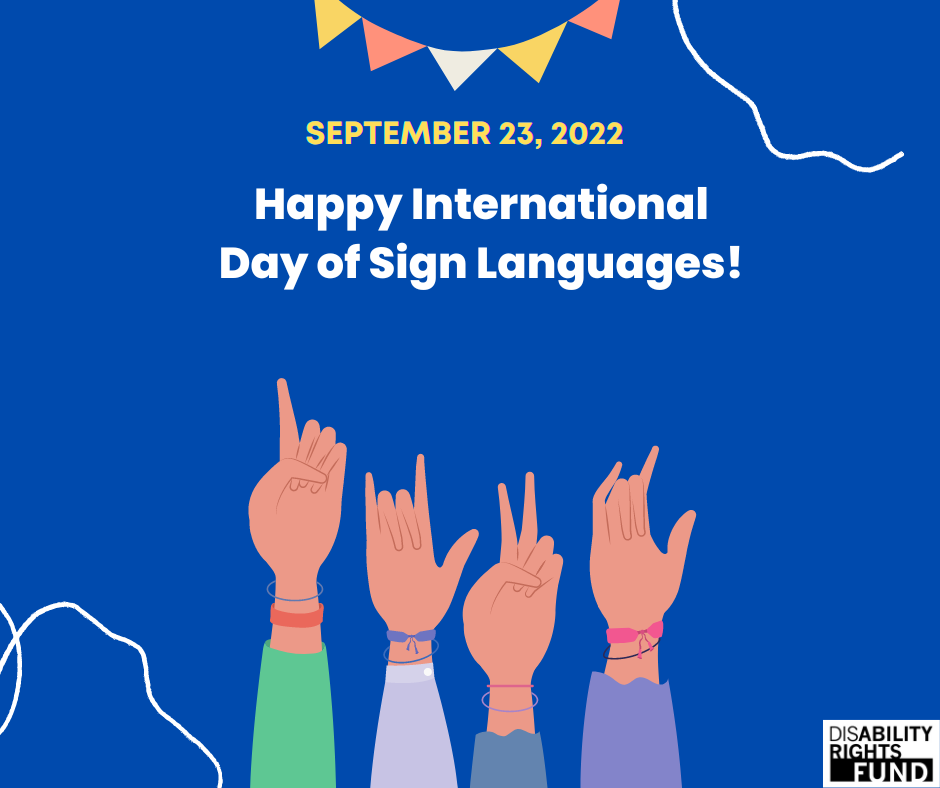Putting the Spotlight on Sign Language and Virtual Spaces
Blog by Kerry Thompson, DRF’s Inclusion & Accessibility Development Manager

“The most important thing in communications is to hear what isn’t being said.”
I love this quote because as a Deaf person, I see so much around me that is communicated without uttering a single verbal word. Sign language was my first language before English, and you could say technology became my third language as I relied on it to navigate the Hearing world.
Two years ago, both Hearing and Deaf people had to figure out how to use technology during the pandemic as we shifted much of our lives to virtual spaces. From my vantage point in Zoom webinars and Microsoft Teams meetings, people are still trying to figure out technology, and they certainly are still figuring out accessibility for those who are Deaf and Hard-of-Hearing. Let’s be honest, not every organization has a tech and communications expert on their team who happens to be Deaf.
Don’t get me wrong, I made many mistakes, but I figured these out much sooner than most as I was already using remote technology before the pandemic hit. And even now, I am still learning as new features are being added, like Zoom allows automatic captions in other languages!
Here are my six tips for working with sign language interpreters and/or a Deaf panelist.
1. Share Materials with Sign Language Interpreters
Interpreters can do their jobs better if they are familiar with the names of speakers and organizations, the topic, and acronyms ahead of time.
2. Grant Early Access to Sign Language Interpreters
Before you hit the “broadcast” button or let everyone out of the waiting room, make sure your sign language interpreters are already in place and ready to go. Otherwise, you will find yourself in the embarrassing situation of trying to find the sign language interpreter in front of everyone after starting the session.
3. Identify Yourself
Remember, a Deaf person could be focusing on the video of the interpreter, not the speakers’ video. A Deaf person would love to know what people are saying but also who is saying it. When a speaker identifies themselves, the interpreter can relay who is speaking.
4. Turn Videos Off
At least, for those who are not speaking. The fewer videos there are, the larger the video of the sign language interpreter will be. It is incredibly difficult to understand a sign language interpreter when they are two inches. Now in a Zoom Meeting, a Deaf person could customize their personal view and “pin” the sign language interpreter’s video so that’s the only video they see. Sadly, you cannot pin during a screen share.
5. Learn What Spotlighting Is
This one always trips people up. People think of spotlighting and pinning as the same thing, or there is confusion around the distinction.
Here’s an alliteration trick to help you remember the difference: Spotlighting is for spectators (audience), and pinning is personal (only your view).
6. Learn Who to Spotlight
It is not enough to know what spotlighting is; it is important to know who to spotlight. For example, it is fine to spotlight a sign language interpreter, but if you have a Deaf speaker who is signing, spotlight the Deaf speaker too. Otherwise, we will only see the video of the interpreter who is now voicing what the Deaf person is signing. This is incredibly offensive to the Deaf individual.
If you still feel overwhelmed by technology, the best advice I can give you is to do a test. I often ask friends and colleagues to hop on a Zoom webinar or a meeting or Microsoft Teams meeting so I can play around with the technology.
I hope these tips help you as you “spotlight” accessibility for me and my fellow sign language users.